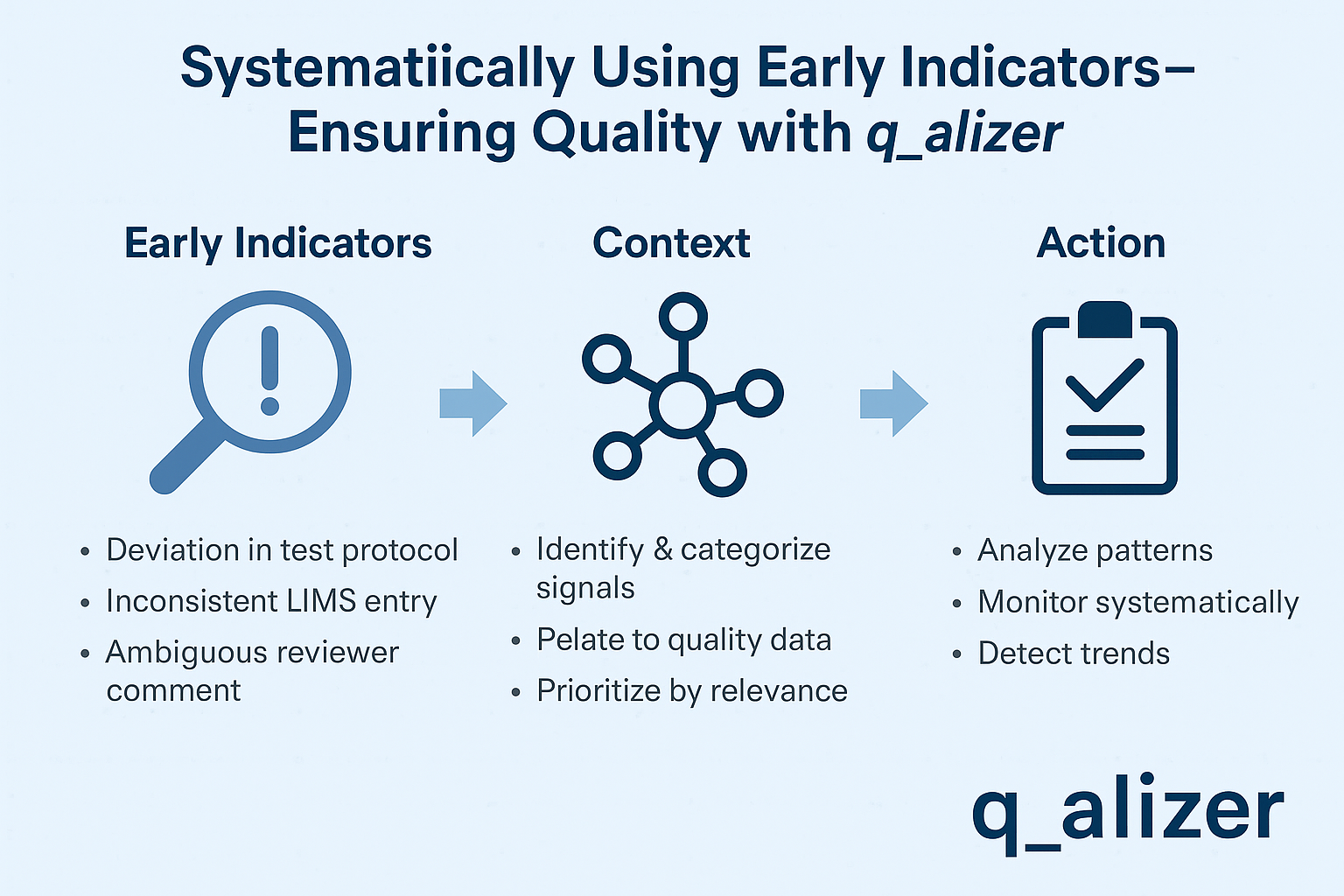Systematically Using Early Indicators – Ensuring Quality with q_alizer





In regulated environments, quality issues rarely arise out of nowhere—they evolve. What starts as a minor deviation or informal observation can, if ignored, lead to significant process disruptions, compliance risks, or audit findings. This article explores how organizations can leverage early indicators systematically to strengthen quality systems and why systems like q_alizer are essential for transforming scattered signals into actionable insights. For QA and QC leaders, it's not just about detection—it's about context, prioritization, and timely response.
In Quality Assurance (QA) and Quality Control (QC), prevention is essential. Yet in everyday operations, small observations often go unaddressed: a minor deviation in a test protocol, an inconsistent LIMS entry, an ambiguous reviewer comment. These signals are frequently dismissed as “minor issues”—and that’s precisely the problem.
Early detection of such micro-deviations is critical to maintaining robust quality processes. From a systems theory perspective, as sociologist Niklas Luhmann noted, even small disturbances can trigger broader structural changes—if they are recognized and analyzed.
Real-world studies confirm this. A University of Cambridge (2017) study on high-reliability systems found that in 63% of investigated production errors, early warning signs were documented but not acted upon—usually deemed “insignificant.”
q_alizer directly addresses this gap. The system enables identification, contextualization, and prioritization of quality-relevant signals—regardless of their initial perceived severity. By integrating data from LIMS, deviation logs, audit findings, and review notes, q_alizer makes low-level warning signs visible and actionable before they can escalate.
This is especially relevant in QC processes, where small inconsistencies can lead to re-analysis, compliance delays, or audit findings. According to IBM (2018), 45% of administrative process errors stem from seemingly trivial inconsistencies.
q_alizer captures and categorizes these deviations systematically. Pattern recognition and structured monitoring help QA/QC teams uncover underlying weak points—across sites, departments, or systems.
There’s also a human factor. When front-line staff repeatedly raise concerns that go unheard, psychological safety declines. The result: Silence replaces insight. Google’s Project Aristotle (2016) identified psychological safety as the most important factor for high-performing teams—especially in regulated environments.
q_alizer integrates informal quality input (comments, observations, suggestions) directly into the monitoring process. These signals become data—traceable, analyzable, and usable in trend detection and continuous improvement.
Conclusion for QA/QC Leaders:
If you want to control quality proactively—not just retrospectively—then even “small things” must be taken seriously. q_alizer provides the structured visibility required for this: data-driven, process-aware, and fully integrable with your existing systems.
Get in contact
Intrigued and ready to learn more about how to better fly your plane?
Cool, the team is waiting to give you a demo of how easy your life will be with q_alizer™!
We’d love to talk with you!
COO
britta.schweinlin@q-alizer.com
044 303 45 56


